If you follow bird conservation, you may have heard of mist netting and bird banding. These activities are carried out by avian researchers around the world to collect morphological measurements, noting plumage and molt characteristics, and recording age and sex. Banding is fundamental to ornithological research and provides the basis of monitoring the behaviors and activities of avian communities.
In fact, one of the first scientific tools to track migratory animals involved a metal band fitted around the leg of a bird.
What is bird banding, what is its purpose, what can we learn from bird banding projects, and how does it aid conservation? Here’s an introduction to this important conservation and research tactic.
What is Bird Banding?
Bird banding has a long history. In North America, John J. Audubon first banded eastern phoebes in the early-1800s and noticed that those banded birds returned to the same breeding site the next year, providing early evidence for breeding-site fidelity.
Since its early days, bird banding has become a valuable means to monitor bird populations. In contrast to other monitoring methods such as systematic surveys, citizen science data collection, and autonomous recording units, bird banding provides scientists with the opportunity to handle the bird and collect morphometric measurements, and even calculate individual bird survival. Of course, to band a bird, it must be captured.
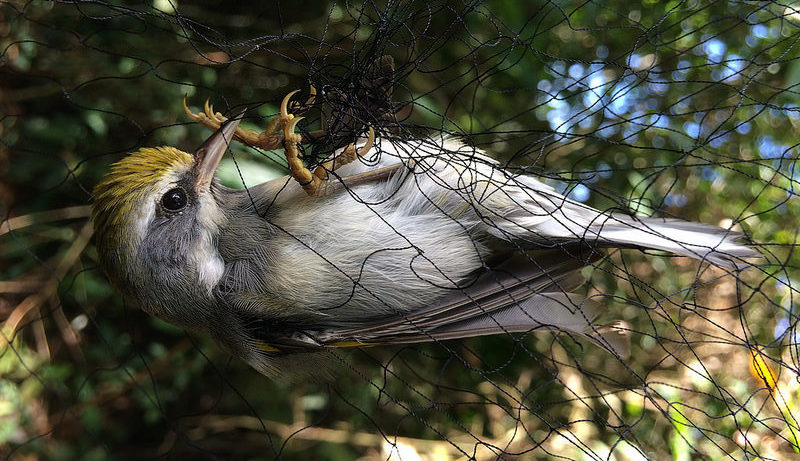
There are many methods for live capture of birds, including the use of traps and nets, but perhaps the most well-known is mist netting. Mist nets are made of fine, black nylon or polyester mesh netting and are usually 12 feet long and about 8-10 feet high when opened. A mist net is stretched between 2 poles, and when placed in the shade amongst vegetation, the net becomes nearly invisible to birds (and often to humans!).
The net stops a flying bird, which then drops into a pocket where it is gently held until an experienced bander extracts it and places it into a carrying device, usually a small cloth bag. Then, the bird may be transported back to the banding station where an individually-numbered, lightweight aluminum or stainless steel band is placed on its leg.
Bands fit loosely so that they can spin around the bird’s leg but not slip past the ankle or foot joints. The banding process is efficient: each bird is identified to species, aged, sexed, and a series of morphological measurements are taken which generally include wing chord, score of visible fat, tarsus, and mass.
Some researchers may collect additional measurements or collect samples from each bird, including feather, blood, or fecal samples that aid in dietary, disease, movement, or genetic studies.
These data points are linked to the bird’s band number, and if the bird is recaptured, these data are useful in studying movements, longevity, and changes in condition.
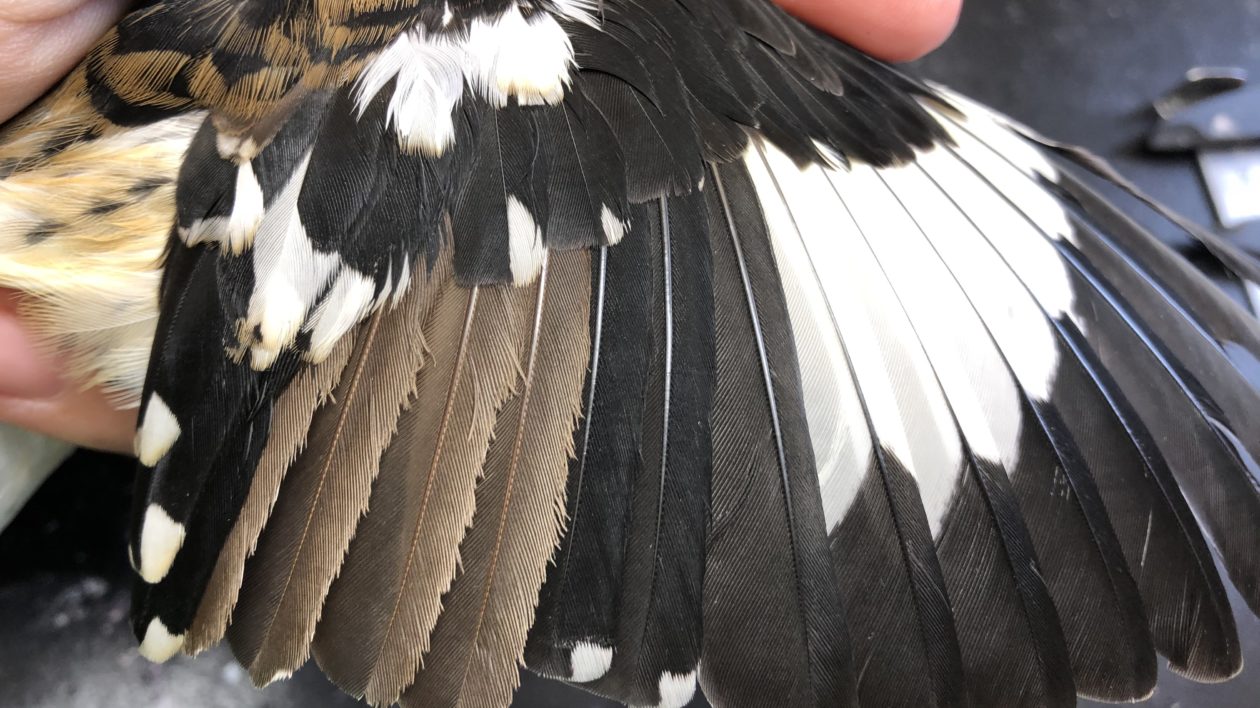
Why Band Birds?
The goal of operating a banding station is to collect high-quality data that build a strong and reliable dataset to address specific scientific questions, contribute to conservation efforts, or contribute new information about the natural history of birds.
Banders know the importance of analyzing their data and publishing in peer-reviewed journals or other scientific literature. Collaborations among banding operations are of increasing importance in data analysis; whereas data from one banding station provides a snapshot of birds at that location, comparing datasets across a wide geographic range yields a more thorough picture of populations continent-wide.
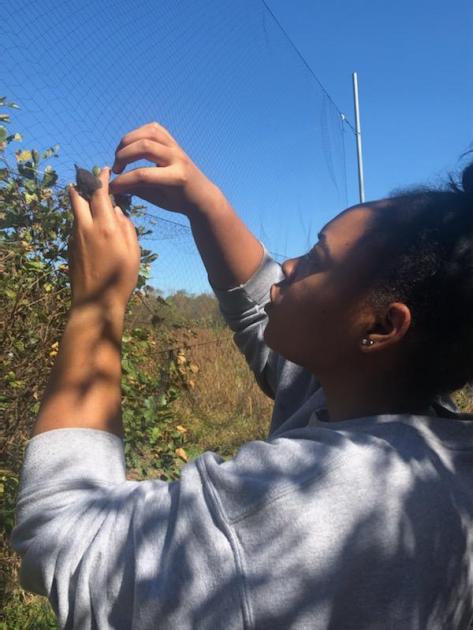
So what questions can be answered using bird banding? Some of the fundamental techniques that banders developed were how to determine the age and sex of birds, and what standard measurements and data points are taken during the banding process. These methods have been refined for decades as we learn more about molt and plumage characteristics, so although modern banders operate much like our banding “ancestors,” our knowledge, ability, and efficiency improve with each bird captured and studied.
Bird banding is necessary in studies that require individual identification. In addition to their numbered metal bands, birds can be banded with a combination of color bands that allows for identification of individuals from a distance.
Using data from individual recognition, researchers may study nesting ecology, post-juvenile dispersal, territoriality, and movement.
Some researchers collect tissue samples to study diet, energetics, or parasite load to track the origin of the tissue and movements of the individual, or to do genetic work. Most tissue sampling is minimally invasive and adds only an extra minute or two to the banding process, but researchers gain valuable insights into migratory movements, the health of individuals and populations, and geographic areas most in need of habitat conservation.
Improvements in wildlife tracking technology means that smaller and smaller species can safely carry transmitters. Transmitter types are quite diverse and range from units that researchers detect using hand-held receivers to track local movements, to transmitters that rely on networks of stationary receivers or GPS technology to track continental, hemisphere-wide, or global movements.
Banding data are used in large-scale, long-term studies to track migratory movements and patterns, population size and demographics, morphology, and behavior, and in particular whether there are changes occurring over time. Data from long-term monitoring projects, and especially from banding datasets, are uniquely suited to identify whether bird populations are resilient to change or are at risk.
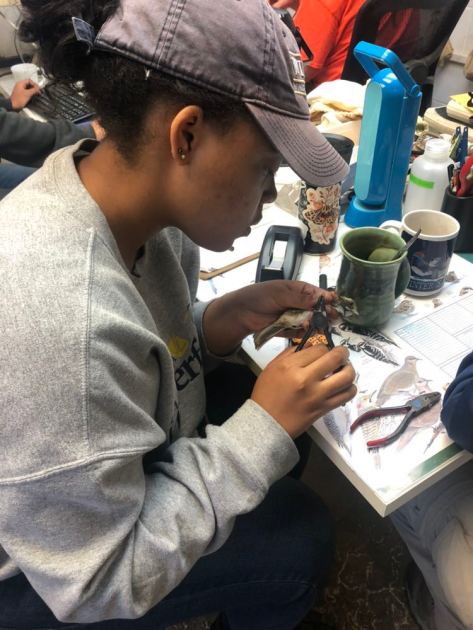
The Monitoring Avian Productivity and Survivorship, or MAPS program is a collaborative effort between banders of diverse organizational backgrounds to monitor breeding bird populations through systematic data collection at relatively long-term banding sites across the continent.
The data collected by MAPS banders are used to estimate vital rates of many species, which can be used to determine at what life stages populations are most vulnerable and what may be driving population declines. Long-term monitoring efforts like bird banding show how birds respond to climate change and other anthropogenic disturbances. The knowledge gained from bird banding records greatly aids conservation efforts by directing focus to when and where birds are most susceptible.
“With these large, long term data sets, we are able to analyze how birds are responding to external stimuli like climate change and other anthropogenic disturbances throughout their annual cycles, and apply what we know to landscape level conservation. Among other things, we have been able to track changes in migration and breeding phenology, morphology, and population sizes presumably in response to climate change” says NABC-certified Bird Bander and Trainer Annie Lindsay, the Banding Program Manager at Powdermill Nature Reserve, Carnegie Museum of Natural History’s environmental research station. “Bird banding provides the foundation for many other types of avian research. The data gathered during the banding process enhances studies by providing additional information only available from having birds in the hand.”
Becoming an Experienced Bird Bander
So who exactly is authorized to handle and band birds? Bird banders operate under a federal bird banding permit issued by the USGS’s Bird Banding Lab. Permits are issued to banders who demonstrate competent skills and strong ethics, and who use banding to enhance scientific research. Becoming an experienced bander requires a lot of training, and gaining the necessary experience and skills can take years.
However, it is not impossible to do!
There are recommended steps to take for those who want to learn more about bird banding and may want to become more experienced in hopes of eventually running their own banding station or obtaining a certain certification. Seeking out and finding field work is a start. Start off as a volunteer or observer. Search in your area for an active banding station that may be taking volunteers.
For banding stations that operate during the high volume migration season, there is usually a need for helpers, both with and without experience. Take the initiative to volunteer for any open positions. You may begin by recording data as the bander dictates each measurement.
With time, you will likely progress to learning how to safely and properly handle birds, then work with the bander to learn how to extract birds from mist nets or learn other methods the banding station might use.
Banders often become mentors to their long-term trainees, and maintain the master-apprentice relationship for life.
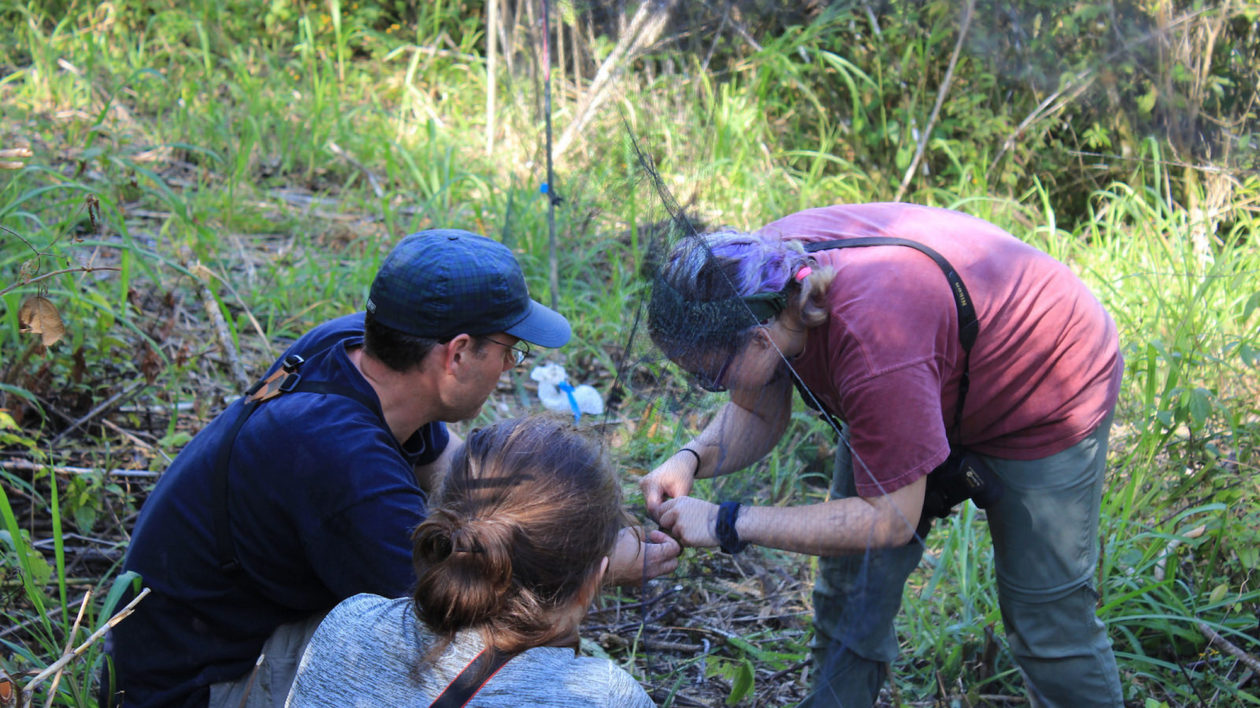
The Social and Human Impact
Humans are naturally drawn to nature’s beauty and mystery, including birds and other animals. However, experiencing an animal up -close often brings forth a deeper appreciation for conservation. Why is it important for a member of the general public to care about scientists banding birds and to learn about the results of their research?
Bird banding is an activity that can bring humans very close to birds. Seeing a brightly-colored, 9-gram warbler in the hand and learning about its incredible migration can forever change the way a person thinks about conservation.
“Birds in hand provide an incredible wonder to many people, especially kids,” says Dr. Christopher Moorman, Professor of Wildlife Ecology and Interim Associate Head of the Department of Forestry and Environmental Resources at NCSU. “My two young boys love banding with me as much as anything.”
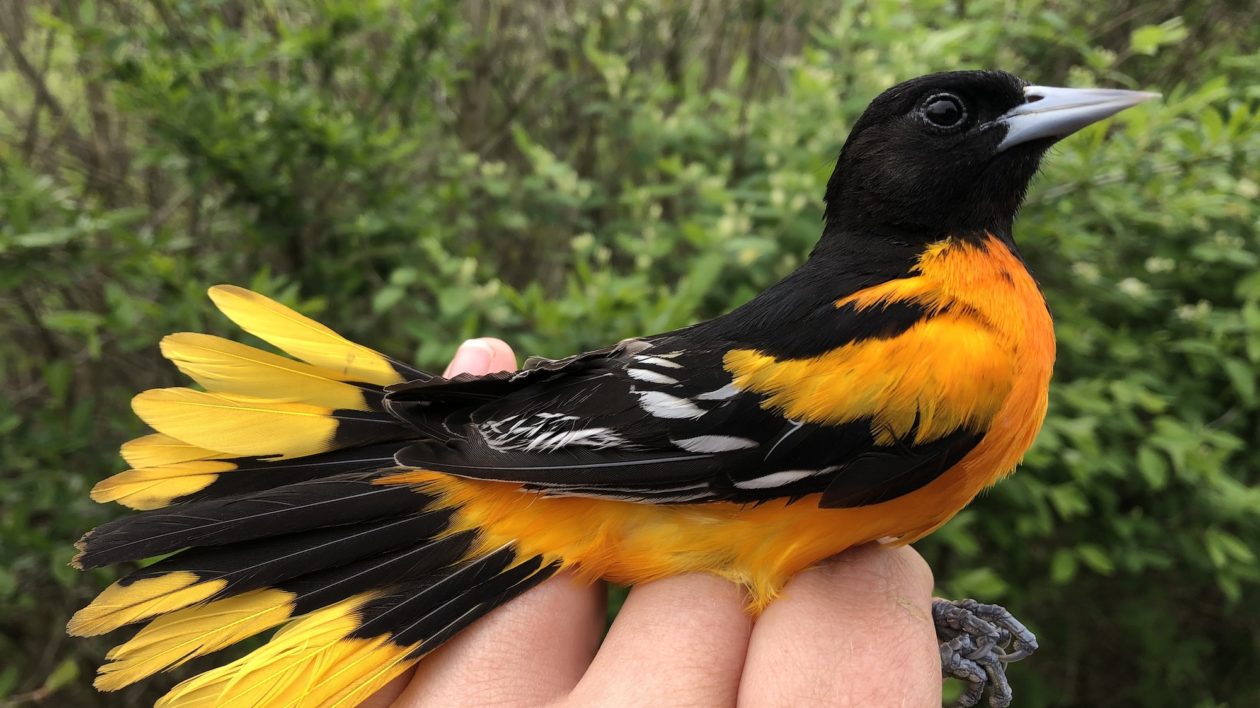
However, some groups of people may not have this privilege, particularly minority communities. Some communities may not have access to green spaces, which attract diverse wildlife. There may also be limited access to resources such as binoculars, field guides, mentors to teach them about what’s out there, as well as opportunities to visit nature centers.
“Banding and seeing birds up close could be a great way to increase interest in underrepresented minority communities,” says Moorman. “I remember years ago helping a friend band as part of a MAPS station in North Carolina. He often had kids watch while he worked up birds. There was a group of African American kids that came to the banding site with a 4-H group that I hosted. One of the boys was really, really into the banding. I saw him years later at a gathering of university wildlife programs from across the South. He was a student in one of the wildlife programs! I like to think that the experience up close with those birds made the difference that drew him into the wildlife profession.”
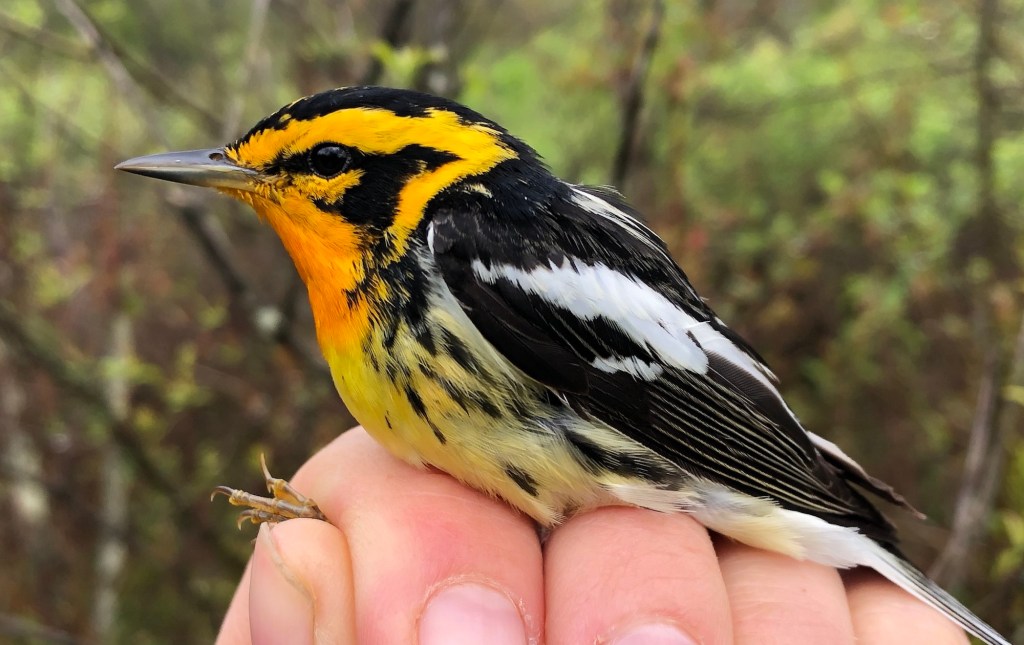



Join the Discussion
1 comment